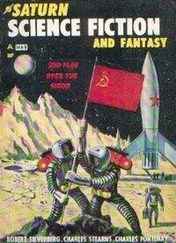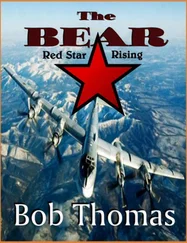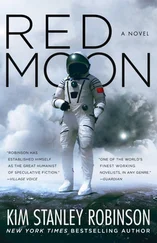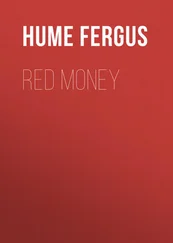Inside, the installations were surprisingly clean and modern and gleamed with white paint. The delegation was ushered into one of the largest of these, a brightly lit hangar of imposing dimensions. At the center of the hangar, displayed on large holding rings like precious museum exhibits, lay three rockets. “This is our past,” said Korolev, pointing to the smallest of the reclined missiles. Korolev was a short, powerfully built man, with a muscular neck and the compact frame of a middleweight wrestler. He had thick black hair, slightly graying on the sides, which he slicked straight back over his large forehead with the aid of pomade. He spoke slowly, in a tone that was neither obsequious nor insecure. Korolev was accustomed to dealing with Presidium members; he had even reported to Stalin on several occasions after returning from Germany in 1946 and being named head of the newly created OKB Special Design Bureau at NII-88.
The rocket he pointed to was the fruit of OKB-l’s German labors, an identical replica of the V-2 called the R-l. Everything about it was German: the parts that had gone into it; the engineers and technicians who had been forcibly relocated to Russia to assemble it (it was from them that the CIA eventually gleaned most of its information on the missile complex); even the camouflage scheme, which mimicked that of the V-2. The R-l, Korolev explained, had taken three painstaking years to master. Not until 1948 had Korolev felt confident enough to try to launch it. It flew a few hundred miles—in the wrong direction.
Khrushchev listened attentively, nodding politely. Much of this he already knew. “Father was no longer a novice when it came to missiles,” Sergei Khrushchev recalled. That certainly had not been the case when Beria was alive. Beria, much like Hitler’s secret police chief, Heinrich Himmler (whom he even resembled in an effete, murderous way), had tried to dominate his country’s missile programs. Though Beria had not exercised remotely the same degree of control over NII-88 as the SS chief had exerted over V-2 production, virtually all top-level decisions involving Soviet missile development had been made by him and Stalin alone, without the participation of other Presidium members. “We were technological ignoramuses,” the elder Khrushchev recounted in his memoirs, describing the first time he and his fellow Presidium members saw a missile after Stalin’s death in 1953. “We gawked,” he wrote, “as if we were a bunch of sheep. We were like peasants in the marketplace. We walked around and around the rocket, touching it, tapping it to see if it was sturdy enough—we did everything but lick it to see how it tasted.”
The missile they had seen back then was the R-2, and this was the next exhibit in Korolev’s tour of OKB-1. The delegation—Kremlin dignitaries in their somber, medal-bedecked suits, engineers in white smocks, security men from the KGB’s Ninth Directorate in black knee-length leather jackets—obediently walked over to the full-scale R-2 model. It closely resembled the R-l, except that it was nine feet longer and of a slightly wider girth, which allowed it to carry extra fuel, doubling its range to nearly 400 miles. The R-2, Korolev explained, was a hybrid: a half-Russian, half-German elongation of the original V-2. It could go farther and faster, climb higher, and carry a heavier payload than its predecessor. Alas, it could not land much more accurately, despite all the 15,000-ruble bonuses offered to captive German engineers to improve the gyroscopic and radio beacon guidance systems that had been developed in Germany during the last year of the war. Still, the R-2 represented a major technological leap in the field of structural design, where the Soviets had learned how to build a much stronger rocket, able to withstand far greater stress loads, without significantly increasing the width and weight of the materials used to build it.
At this, the Presidium members also nodded knowingly. But Molotov and Kaganovich seemed distracted, while Bulganin appeared lost in his own private universe. Perhaps they had also heard the lecture before, or perhaps they were still mulling over the consequences of Khrushchev’s secret speech at the Twentieth Party Congress. Barely two days had passed since the dramatic address had so shocked and staggered its audience that, in the words of one participant, “you could hear a fly buzzing” in the stunned silence that permeated the Great Kremlin Palace. Khrushchev had spoken for nearly four uninterrupted hours, and his listeners had turned either deathly pale or beet-red with anger. When he was done, there was not the usual standing ovation, which was typically thunderous and prolonged, because in Stalin’s day no one dared to be the first to stop clapping and sit down. The cheering could last five palm-aching minutes until the “boss” signaled that he was satisfied. But Khrushchev, at the Twentieth Party Congress, had done the unimaginable: he had publicly attacked Joseph Stalin. Stalin, he said, had abused his authority and had ruined millions of innocent lives. Stalin was a murderer, a liar, and a thief, who had stolen the communist ideal and perverted it with his paranoid quest for power.
An audible gasp had echoed throughout the palace hall, as if there suddenly was not enough air to breathe. Even to think what Khrushchev had uttered aloud was considered heretical in the Soviet Union, punishable by excommunication to Siberia or outright execution. What Khrushchev had done was tantamount to the pope assembling the College of Cardinals to denounce Christ. Stalin had been a demigod, as much revered as feared. At his funeral, such was the outpouring of grief that one hundred people had been trampled to death by the mobs of mourners that had descended on Red Square to view his body lying in state next to Lenin. His victims sent tearful tributes from prisons. Grown men sobbed inconsolably on the subway. Only the Presidium members shed crocodile tears. As the Great Leader slipped in and out of consciousness, they had denied him medical attention to hasten his demise. They had hovered over his deathbed like ghouls, falling to their knees when his eyes flickered open, retreating to scheme in dark corners when they closed. When at last he drew his final strained breath, the relief on their faces was clear. They had survived the Terror.
But now Khrushchev’s speech had put them all in danger again. They had warned him not to do it; it would open up a can of worms that might consume them all, they said. “If now, at the fountain of communist wisdom, a new course is set which appears to deviate considerably from that of the Stalin era,” the CIA noted in an April 1956 analysis of the speech, “repercussions are likely to occur which may be of great moment…. It may set in motion forces extending far beyond the contemplation of the collective leaders of the CPSU.”
Khrushchev told his fellow Presidium members that 7 million Soviet citizens would soon be returning from Stalin’s Siberian gulags. From the prisons they would bring back horror stories of torture and mass murder, of starvation and sham trials. There would be no way, Khrushchev reasoned, to keep the full and terrible extent of Stalin’s purges quiet much longer.
“Don’t you see what will happen?” Kaganovich had protested. “They’ll hold us accountable…. We were in the leadership, and if we didn’t know, that’s our problem, but we’re still responsible for everything.”
Kaganovich’s feigned ignorance must have provoked a cynical snicker from the other members of the Presidium. How any Soviet citizen, least of all a fawning Stalin henchman like Lazar Kaganovich, could profess no knowledge of the fratricidal inferno that raged between 1929 and 1953 and engulfed 18 million lives was baffling. What had begun as a settling of accounts in the Central Committee had degenerated into a national feeding frenzy that left no corner of the Soviet empire unscarred. People turned in their neighbors because they wanted their apartments. Subordinates ratted out superiors because they wanted their jobs. Economic failures were blamed on “wreckers” and foreign saboteurs. Ethnic minorities were arrested en masse. Baits, Jews, Chechens, Volga Germans, Crimean Tatars, and Western Ukrainians were shipped by the trainload to Arctic jails. The Siberian death trains ran from as far west as Warsaw, where more than one million Poles were sent to the gulags, half never to return. The gulag archipelago that became their final resting place stretched over thirteen time zones, encompassed three thousand prison and labor camps, and employed hundreds of thousands of guards, administrators, and factory technicians. Vast railway networks had been carved over the permafrost to supply it with inmates and to haul the gold, coal, diamonds, and timber that their slave labor produced. Entire swaths of the Soviet economy depended on the blood-soaked revenue generated by the gulags, which did double duty as an engine of mass murder no less efficient than the Nazi concentration camps. The weeks-long cattle-car journeys could kill half the arrivals. Cold, disease, malnutrition, and overwork did the rest.
Читать дальше












